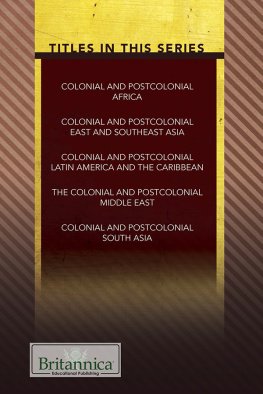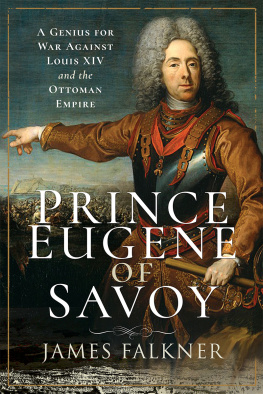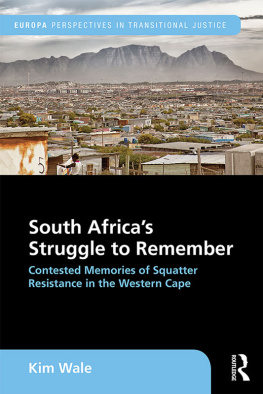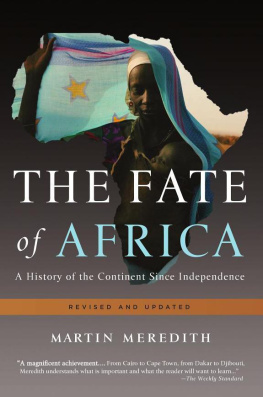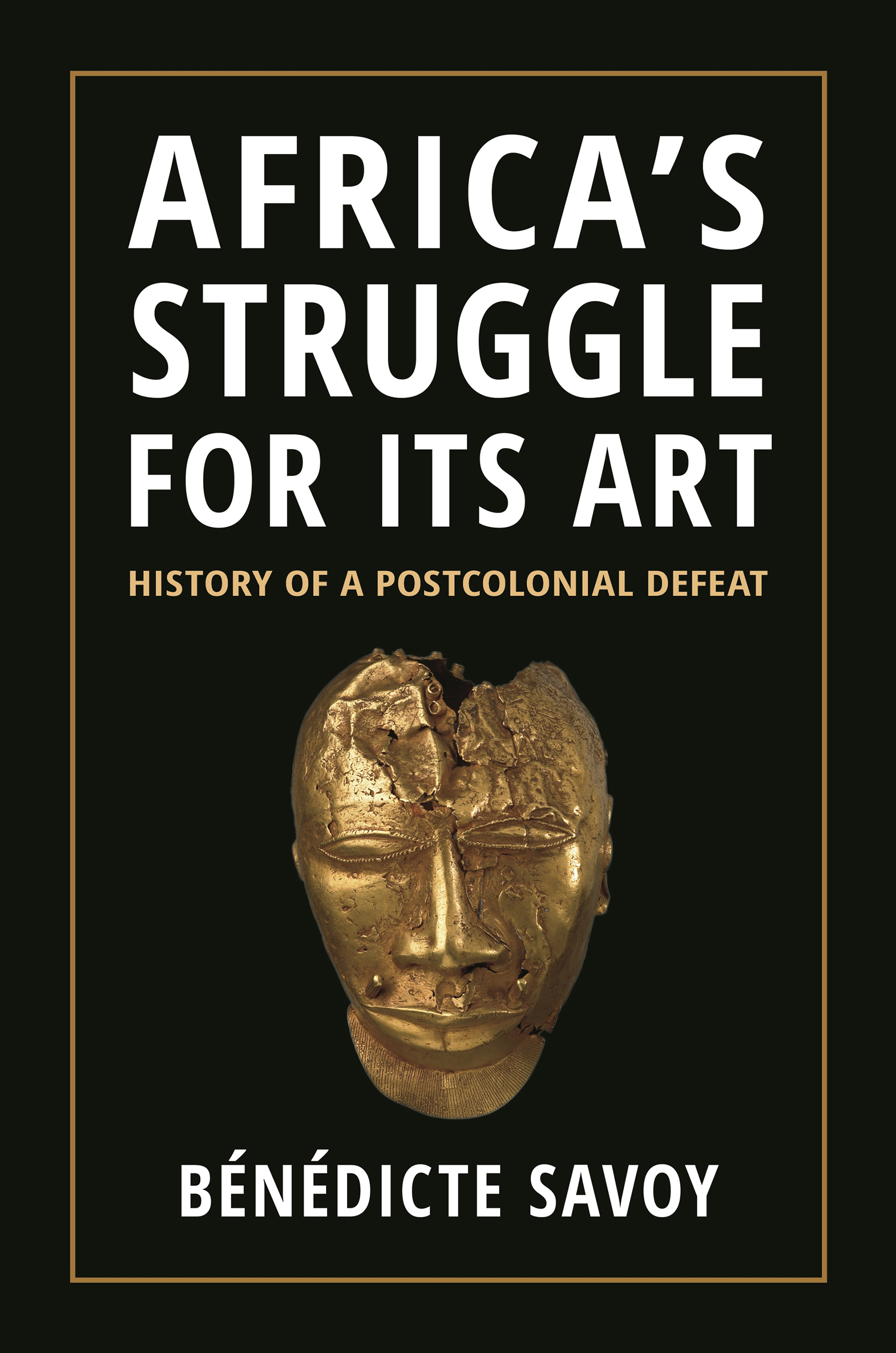AFRICAS STRUGGLE FOR ITS ART
AFRICAS STRUGGLE FOR ITS ART
HISTORY OF A POSTCOLONIAL DEFEAT
Bndicte Savoy
Translated by Susanne Meyer-Abich
PRINCETON UNIVERSITY PRESS
PRINCETON AND OXFORD
First published in German under the title Afrikas Kampf um seine Kunst Geschichte einer postkolonialen Niederlage by Bndicte Savoy. Copyright Verlag C.H.Beck oHG, Mnchen 2021
English translation copyright 2022 by Princeton University Press
Princeton University Press is committed to the protection of copyright and the intellectual property our authors entrust to us. Copyright promotes the progress and integrity of knowledge. Thank you for supporting free speech and the global exchange of ideas by purchasing an authorized edition of this book. If you wish to reproduce or distribute any part of it in any form, please obtain permission.
Requests for permission to reproduce material from this work should be sent to permissions@press.princeton.edu
Published by Princeton University Press, 41 William Street, Princeton, New Jersey 08540
In the United Kingdom: Princeton University Press, 99 Banbury Road, Oxford OX2 6JX
press.princeton.edu
Jacket illustration: Trophy head, 18th or 19th century. Ghana. Gold; 20 14.5 14 cm. Wallace Collection, London, UK. Photo Wallace Collection, London, UK / Bridgeman Images
All Rights Reserved
Library of Congress Cataloging-in-Publication Data
Names: Savoy, Bndicte, author.
Title: Africas struggle for its art : history of a postcolonial defeat / Bndicte Savoy ; translated by Susanne Meyer-Abich. Other titles: Afrikas Kampf um seine Kunst. English
Description: Princeton : Princeton University Press, 2022. | First published in German under the title Afrikas Kampf um seine Kunst Geschichte einer postkolonialen Niederlage by Bndicte Savoy. Copyright Verlag C.H.Beck oHG, Mnchen 2021Title page verso. | Includes bibliographical references and index.
Identifiers: LCCN 2021038304 (print) | LCCN 2021038305 (ebook) | ISBN 9780691234731 (hardcover) | ISBN 9780691235912 (ebook)
Subjects: LCSH: Cultural propertyRepatriationAfricaHistory20th century. | Cultural propertyProtectionAfricaHistory20th century. | Art, African. | MuseumsAcquisitionsEurope.
Classification: LCC N9073 .S2813 2022 (print) | LCC N9073 (ebook) | DDC 709.60744dc23
LC record available at https://lccn.loc.gov/2021038304
LC ebook record available at https://lccn.loc.gov/2021038305
British Library Cataloging-in-Publication Data is available
Version 1.0
CONTENTS
- vi
PREFACE
Almost all of Africas ancient artistic heritage is now preserved in European countries: in the United Kingdom, France, Germany, the Netherlands, Vienna and Belgium. It is difficult to convey the magnitude of this reality in numbers, to physically experience the space it occupies, to imagine the weight it represents, the forces it took to move these pieces and the time it would take to physically lift them one by one. The British Museum alone has sixty-nine thousand objects in its inventory from African countries south of the Sahara. The Weltmuseum in Vienna has thirty-seven thousand. The Royal Museum for Central Africa in Tervuren, Belgium, has one hundred and eighty thousand. The Nationaal Museum van Wereldculturen in the Netherlands holds sixty-six thousand, the Ethnologisches Museum in Berlin seventy-five thousand, and the Muse du Quai Branly-Jacques Chirac in Paris almost seventy thousand. The major public museums in Paris, Berlin, London, Brussels, Vienna, Amsterdam and Leiden together hold more than half a million African objects.
These figures do not even include European regional, military, university or missionary museumsfrom Oxford to the Vatican, via Le Havre, Lyon, Stuttgart or Leipzigwhich possess several more tens of thousands of objects. Not to mention natural history collections that contain countless botanical, geological and human specimens, prestigious unique specimens taken from Africa: the fossil bones of the largest dinosaur known today, for example, lay for one hundred and fifty million years in the soil of what is now Tanzania before being removed and assembled in Berlin, where they have been on public display since the 1930s. The same applies to libraries: since the beginning of the twentieth century, to study the manuscript heritage of African countries south of the Sahara required trips to the British Library in London, the Bibliothque nationale de France in Paris or the Vatican Library in Rome.
Nowhere else in the world, neither in the Americas nor in Asia, nor in Africa especially, have such collections been accumulated. In the United States, the total number of objects from African countries south of the Sahara in the inventories of art and ethnology museums barely reaches fifty thousand pieces in total: about twenty thousand in the Penn Museum in Philadelphia, thirteen thousand in the Department of Anthropology of the Smithsonian Institution in Washington, DC, four thousand in the Brooklyn Museum in New York and only three thousand in the famous African art collection of the Metropolitan Museum in New York. Taken together, American museums hold fewer African objects than the African heritage department of the Muse du Quai Branly-Jacques Chirac alone.
This very particular geographical distribution is inextricably linked to the nineteenth and twentieth centuries occupation of the African continent by European states. It also explains why the first major global debate on restitution of these objects emerged in Europe in the 1970s. And within Europe, it was certainly in the Federal Republic of Germany (FRG), during this period of the Cold War that the public debate was most intense, most rich in content and most enduring, spanning museums, politics, administrations, media and television. While Germany may not have been a major colonial power in terms of the number of its colonies, its historical development from dozens of monarchies, principalities, bishoprics, duchies and city statesto some extent reflected in its federal government structure todaytranslated into an unusually varied and rich museum landscape, with competing institutions jockeying for position and influence, often led by ambitious professionals and documented extensively in associated archives.
This book is devoted to the European debate on the restitution of Africas cultural heritage in the aftermath of the independence of former colonised countries. Nigeria and the FRG play a central role. In 1976, the Christian Science Monitor called the global debate on restitution a German debate. But the arguments, speeches and rhetoric of these countries and the political strategies they adopted at the time are precise reflections of those deployed in other countries, for example, in the United Kingdom and France. They were pervasive until very recently, and in some cases even continue to be.
The present book was published in Germany on 18 March 2021. At that moment, and for several years beforedespite increasing pressure from the public, scholars and activist organisations, despite the intervention of the Nigerian ambassador to Berlin, Yussuf Tuggar, and despite the historical evidence of archival documentsthe management of the Staatliche Museen zu Berlin (Berlin State Museums) still continued to deny any direct involvement in the often violent cultural plunder of African countries, while burying the possibility of restitution under a ubiquitous discourse about the costly and timely exercise of provenance research.


